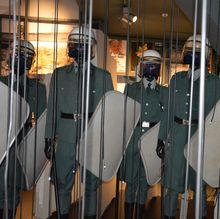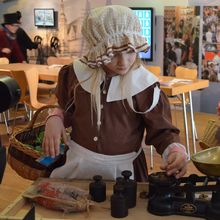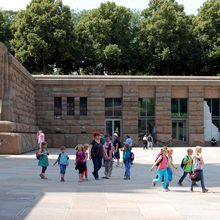Permanent Exhibitions

Old Town Hall
Leipzig original
Part I From medieval times to the Battle of Leipzig
The first part of the permanent exhibition “From medieval times to the Battle of Leipzig” has been arranged deliberately to match the historical rooms surrounding the ballroom and the council chamber on the main floor.

Old Town Hall
Part II Modern Times
"Modern Times", the second part of the permanent exhibition from the 19th to the 21st century is located on the second floor of the Old Town Hall. The development of Leipzig is presented in eight historical periods with so-called “identity islands” providing more detailed information on events that have shaped the city.

Schiller House
Friedrich Schiller in Leipzig and Gohlis 1785
The roughly 100 items in the exhibition of the "Schillerhaus" give a vivid impression of the atmosphere of that time and the personalities who encountered the poet or made friends with him. Furthermore, it is dedicated to Schiller’s literary works and their performance in Leipzig, e.g. the dramas “Kabale und Liebe” and “Don Carlos” as well as the ode “An die Freude”, which became world famous in Beethoven’s musical setting.

Children’s Museum
In the Children’s Museum children aged from 6 to 10 get to know the lively history of Leipzig from their own point of view. In a highly interactive way they are invited to participate. Through the exhibition about Leipzig’s fair, they learn much about the importance of Leipzig as a trade city.

FORUM 1813 | Monument to the Battle of the Nations
The FORUM 1813 museum (which is located at the base of the Monument) provides information on the Battle of the Nations. At the museum, a large number of rare weapons, uniforms, pieces of equipment and personal mementos provide insights into those tragic days of war.
A 15-square metre diorama with 3,000 sculptural figures constitutes the much-admired centrepiece of the exhibition. This diorama, which was constructed with as much precision as possible in accordance with contemporary descriptions, includes a village near Leipzig the way it might have appeared to an observer on 18th October 1813, during the attack by Russian and Prussian troops.
Impressions from the exhibition

Arabian Coffee Tree Museum
There are more than 500 exhibits such as coffee grinders, Meissen porcelain, coffee cups (including one used by Napoleon in 1813), roasters, vessels used for making coffee, coffee house rules, coffee substitutes, coffee house music and a highly modern sample roaster, which can be used to demonstrate the noble art of roasting coffee beans.
The items on display give an unpretentious insight into the highlights and special features of Saxon coffee culture. Multimedia stations, such as e.g. a documentary about current coffee culture by migrants in Leipzig, provide information about contemporary coffee traditions and trends.